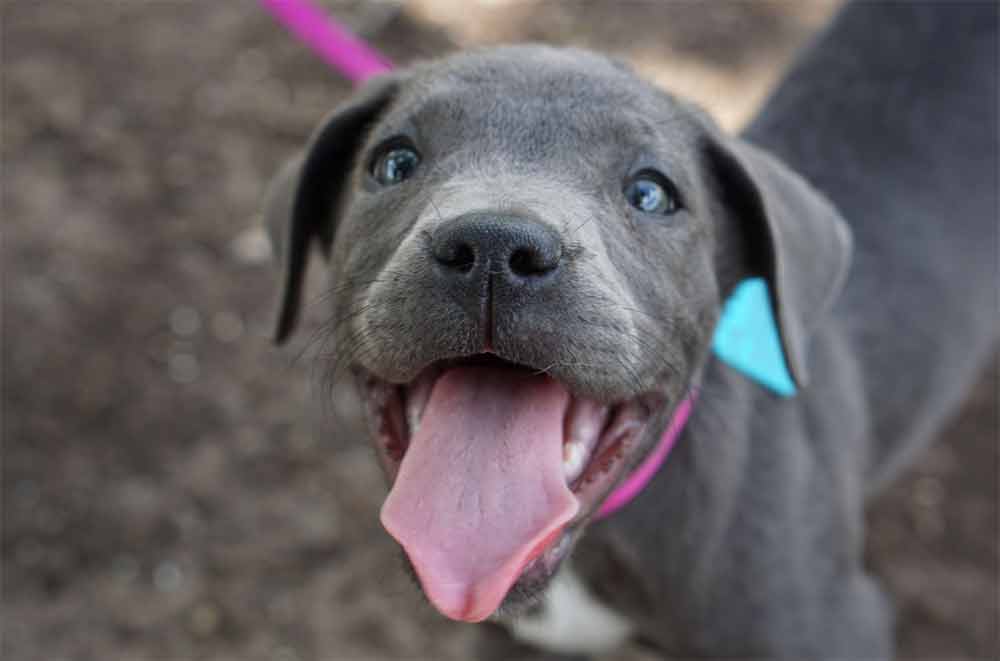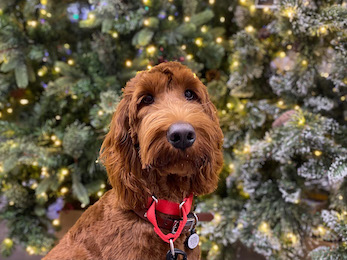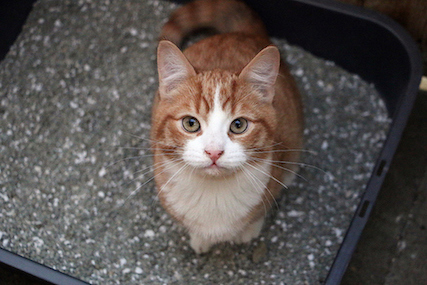Breed History
Few breeds of dogs have experienced such long standing levels of misunderstanding and censure than the pit bull. To truly understand the dissension surrounding this breed type, it is important to understand its origins and the reason for its creation. As is often the case, bully type dog breeds originally arose as a cross, between bulldogs (so named because they were used in the sport of bull baiting) and terriers (long used for hunting vermin of various types), with the goal of creating a dog better suited for various blood sports that were popular in the 18th and 19th centuries in England and surrounding countries. While bull and bear baiting had been long standing and popular sports in many countries, opinions began to change with time and were eventually outlawed in England in 1835. This led to a rise in ratting and dog fighting as alternative means of entertainment, and the need for a dog suited to these arenas. Even in the early days of the breed, when fierceness was valued and bred for, bite inhibition towards humans was considered essential. Dogs that couldn’t be trusted around the humans curating the fights were quickly excluded. As the world continued to evolve, English and Irish immigrants brought dogs of this ancestry with them to the United States. This new world required a dog with new skills and the pit bull type dog evolved to meet this need, becoming an all round helper for farmers, tradesmen, frontier families and many more. Many of the breed traits that had served the pit bull type dogs well in their original function, such as strength, agility, intelligence and courage quickly recommended them as excellent all round helpers. As the United States grew and changed, so did the pit bull dog and the politics surrounding them. At times, this led to significant disinformation and misunderstanding about the breed. Eventually, this type of dog was divided into various official breeds, with the American Pit Bull Terrier recognized by the United Kennel Club in 1898 and the closely related American Staffordshire Terrier (AmStaff) recognized by the American Kennel Club in 1936. Other breeds, including the Bull Terrier and Staffordshire Bull Terrier, also share common roots and were recognized as official breeds by registries on both sides of the Atlantic.

Breed Characteristics
Due to their common roots, Pit Bulls and AmStaffs share many characteristics in terms of personality and appearance. Both breeds stand approximately 17-20 inches tall at the shoulder and generally weigh around 50-70lbs. Due to differences in breed type, sex and breed preferences, some members of both breeds may fall outside of these general ranges while still remaining true to the breed standard as set by their registry. Pit Bulls and AmStaffs demonstrate the classic stocky, powerful build of heavy hitting athletes. Their short, slick coats showcase their deep chests and well defined musculature. With large skulls and heavily muscled jaws, these dogs can initially come across as physically intimidating. However, the truth is often much different as members of these breeds are generally known to be quite friendly and outgoing even towards strangers. Pit Bulls are bred to exemplify a balance between heavy muscling and lean athleticism, with emphasis on function, physical harmony and symmetry. While AmStaff breeders place more importance on conformational correctness according to the breed standard and members of this breed are often broader and stockier overall. Both breeds are recognized in a wide range of coat colors, with the exception of merle in the case of Pit Bulls. While generally healthy, responsible breeders will screen for a few known health issues that can arise in the breeds. This might include screening for hip dysplasia, cardiac disease, thyroid and ophthalmologic issues. AmStaffs are known to carry genes for cerebellar ataxia (neuronal ceroid lipofuscinosis or NCL), however genetic testing is available to help breeders test parents and identify carriers of this disease. Pit Bulls can present with degenerative myelopathy as they age, and genetic testing is also available to screen for this disease. Some members of both breeds may struggle with skin allergies.

Is a Pit Bull Terrier or American Staffordshire Terrier Right for You?
If you are searching for a dog that looks like a serious contender, but is actually a jovial clown, a Pit Bull or AmStaff might be a good fit! With their gaming roots, it is no surprise that these dogs tend to be physically active and highly intelligent. Their good natured confidence and strength of personality, a result of terrier tenacity, can be a true asset when channeled in appropriate directions. Many Pit Bulls and AmStaffs thrive in active households that provide diverse outlets for their love of a challenge and drive to achieve a goal (a goal they have deemed important at least!). Most members of these breeds also enjoy cuddling with their people, especially if they are tucked under a blanket when it’s chilly! Some, though not all, take pleasure in wearing cute pajamas and jackets to supplement their short hair coats during cold weather. Highly trainable, when properly motivated with either toys, food or snuggles, Pit Bulls and AmStaffs can set their paws to a wide range of dog sports from obedience, to agility to scent work.
Common behavioral struggles with this breed can include excessive enthusiasm such as jumping and play biting directed towards household members. Due to their origins, many members of these breeds still retain a strong drive to chase small animals, such as rabbits, squirrels and cats. Without proper training, this can result in walks becoming a frustrating experience for both the dog and the handler. Similarly, dogs who were not introduced to other species (such as cats, rabbits and ferrets) as puppies may struggle to live harmoniously with these housemates as adults without training interventions. Due to their high intelligence and tenacity when problem solving, Pit Bulls and AmStaffs can occasionally be dedicated escape artists, who require sturdy kennels and fencing to ensure their safety. The United Kennel Club’s breed description for the Pit Bull states that some dog directed aggression can still be seen in the breed. However, it also emphasizes that members of the breed must still conduct themselves in an appropriate manner in public settings including around other dogs.
Pit Bulls and AmStaffs can adapt to a wide range of living situations, from country living to apartment life. For many examples of these breeds, they are quite content to snuggle on the couch once their exercise needs have been adequately met. Generally gregarious towards new people, and devoted to family members, they can thrive in households with a variety of compositions. Pit Bulls and AmStaffs tend to be patient and loving towards children and adults alike, with proper socialization and training. Members of these breeds benefit greatly from early exposure to a wide variety of people and other animals. These experiences can help ensure that they will be successful participants in diverse households later on in life, including around small mammals and livestock. The significant majority of Pit Bulls and AmStaffs get along well with other dogs and enjoy wrestling with a like minded playmate immensely. The uninitiated may be surprised how noisy these play sessions can become, as the Pit Bulls and AmStaffs often indulge in a wide range of vocalizations to express their enjoyment.

Finding Your Next Family Member
When choosing a Pit Bull or AmStaff puppy, finding a responsible breeder can help ensure puppies were produced from genetics with an emphasis on solid temperaments.
Quality breeders will also conduct appropriate breed specific health testing on both parents and possibly grandparents. The American Kennel Club outlines what tests are suggested for each breed to prevent the continuation of genetic diseases. The recommended health tests for AmStaffs include hip evaluations, thyroid testing, ophthalmic and cardiac exams and NCL genetic testing. The United Kennel Club does not offer any specific health testing guidelines, however health testing for Pit Bulls should be similar to that of AmStaffs. When meeting the puppies, ask to see both parents and any other related dogs that may be on site. Both puppies and adult members of the breed should seem friendly and sociable, any sign of human directed aggression (apart from a female with very young puppies) should be cause for concern. Responsible breeders should be invested in finding the best homes possible for their puppies, so expect lots of questions and detailed conversations about setting new puppies up for success. Seek out breeders who are willing and able to provide support and information long after you take your new addition home. Most breed enthusiasts will be involved in confirmation exhibitions or other sports to help further the breed, with the production of puppies as a secondary goal. When inspecting the puppy raising areas, watch for good hygiene and sanitation which will lead to healthy puppies. Since proper socialization starts well before puppies are ready to leave their mothers, it is important to consider what types of early experiences each litter has been exposed to. Puppies who have lots of early, controlled, positive, experiences with a variety of people, animals and environments are generally predisposed to later social success.
If your new family member is coming from a rescue situation, it may not be possible to gather some of this information. However, many of the same guidelines will apply. Look for a happy, outgoing dog who is willing to approach and engage with you. Given that the shelter environment can be overwhelming for some dogs, some level of initial reticence or shyness may be seen. Taking dogs for a brief walk outside of the rescue can sometimes help them relax and bring out more of their true personality.
No matter where you met your Pit Bull or AmStaff, these dogs can be some of the most stalwart companions and dedicated clowns.




